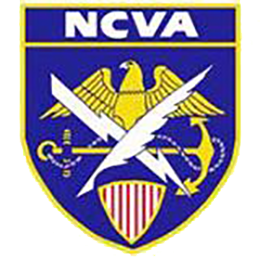U.S. Navy “Code Girls” in World War II
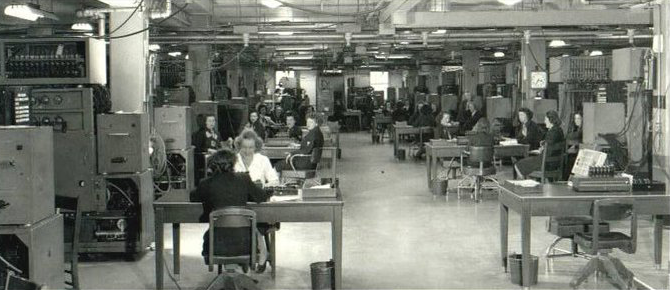 The contributions of the thousands of “Code Girls” employed by OP-20-G during World War II was critical in helping to win the Secret War. They carried their service as a secret throughout their lives.
The contributions of the thousands of “Code Girls” employed by OP-20-G during World War II was critical in helping to win the Secret War. They carried their service as a secret throughout their lives.
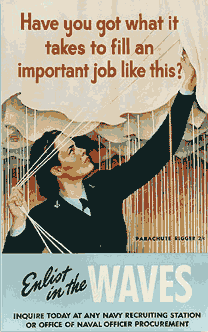 In May 1941, several members of the American Women's Volunteer Services (AWVS) proposed to the Director of Naval Communications, Rear Admiral Leigh Noyes, that women should be given greater opportunity to contribute to the defense effort. The AWVS group suggested that dedicated wives of naval officers could make significant contributions in cryptanalysis, a field of endeavor believed to be short of qualified personnel.
In May 1941, several members of the American Women's Volunteer Services (AWVS) proposed to the Director of Naval Communications, Rear Admiral Leigh Noyes, that women should be given greater opportunity to contribute to the defense effort. The AWVS group suggested that dedicated wives of naval officers could make significant contributions in cryptanalysis, a field of endeavor believed to be short of qualified personnel.
A security clearance was not required for those applicants who were recommended by a naval officer and permission was granted to form a class of students to undergo basic instruction. The curriculum consisted of a correspondence course in elementary cryptanalysis, supplemented by an instructor's weekly classroom review of progress on home study. Twenty-five wives of naval officers, ranking from Lieutenant to Rear Admiral, began the course. Progress became quickly evident and, in three months, 21 of the women had completed the course. Their enthusiasm generated an unofficial title for the group: Special Women’s Auxiliary Naval Service, or SWANS.
When the United States entered the war on 7 December 1941, this group of trained women was ready for assignment to cryptanalytic duties. They immediately volunteered for tasks that put their classroom work to practical use. They initially worked only when spare time was available, serving in teams performing cryptanalysis, translation, and censorship duties. Many were accorded Civil Service status.
By the summer of 1942, the original group of SWANS had been absorbed into various OP-20 offices. Several SWANS requested Rear Admiral Noyes to grant them official recognition as a uniformed branch of the Navy—whatever specific action he took is unknown. However, on 30 July 1942, the Women Accepted for Voluntary Emergency Service (WAVES) came into being.
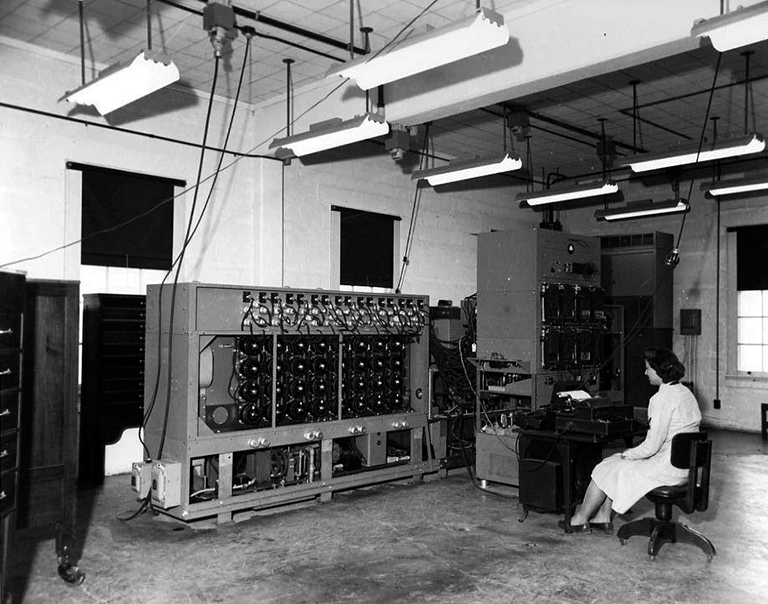 WAVES from all over the United States attended boot camp and were trained as Radiomen. After their training had been completed, “Code Girls” were assigned to special duties at the Naval Security Station or at other select field activities. Many of those WAVES stationed at the Naval Security Station were involved in the day–to–day operation of the electromechanical cryptanalytic machines (Bombes) used to derive plain-text copy from enciphered messages, permitting linguists to read, translate, and report intelligence from Nazi message traffic.
WAVES from all over the United States attended boot camp and were trained as Radiomen. After their training had been completed, “Code Girls” were assigned to special duties at the Naval Security Station or at other select field activities. Many of those WAVES stationed at the Naval Security Station were involved in the day–to–day operation of the electromechanical cryptanalytic machines (Bombes) used to derive plain-text copy from enciphered messages, permitting linguists to read, translate, and report intelligence from Nazi message traffic.
Dayton Codebreakers
 Collection, decryption, and analysis of Nazi Kriegsmarine message traffic, especially radio communications to and from its U-boats, was critical to the survival of Great Britain in World War II. In 1942, the Kriegsmarine began using a four-rotor version of the Enigma encipherment device, for which the cryptanalysts at the Government Code and Cypher School (GC&CS) were not able to penetrate—Bletchley Park had designed and built Bombes capable of handling the original three-rotor Enigma machines used by the Luftwaffe and Wehrmacht. GC&CS worked with British Tabulating Machine company to develop a four-rotor, high-speed Bombe but, by late 1942, only four such devices were available. After serious negotiations, the British agreed to provide details of their new machine to the U.S., which contracted with the National Cash Register company to replicate and build a four-rotor Bombe. Working with the US Navy (OP-20-G4), NCR established the Naval Computing Machine Laboratory in Dayton, Ohio under Joseph Desch, who designed an electromechanical version of the GC&CS Bombe. The NCML delivered 143 production models, beginning in 1943, which were operated by 600 US Navy “Code Girls” who were trained and housed on site.
Collection, decryption, and analysis of Nazi Kriegsmarine message traffic, especially radio communications to and from its U-boats, was critical to the survival of Great Britain in World War II. In 1942, the Kriegsmarine began using a four-rotor version of the Enigma encipherment device, for which the cryptanalysts at the Government Code and Cypher School (GC&CS) were not able to penetrate—Bletchley Park had designed and built Bombes capable of handling the original three-rotor Enigma machines used by the Luftwaffe and Wehrmacht. GC&CS worked with British Tabulating Machine company to develop a four-rotor, high-speed Bombe but, by late 1942, only four such devices were available. After serious negotiations, the British agreed to provide details of their new machine to the U.S., which contracted with the National Cash Register company to replicate and build a four-rotor Bombe. Working with the US Navy (OP-20-G4), NCR established the Naval Computing Machine Laboratory in Dayton, Ohio under Joseph Desch, who designed an electromechanical version of the GC&CS Bombe. The NCML delivered 143 production models, beginning in 1943, which were operated by 600 US Navy “Code Girls” who were trained and housed on site.
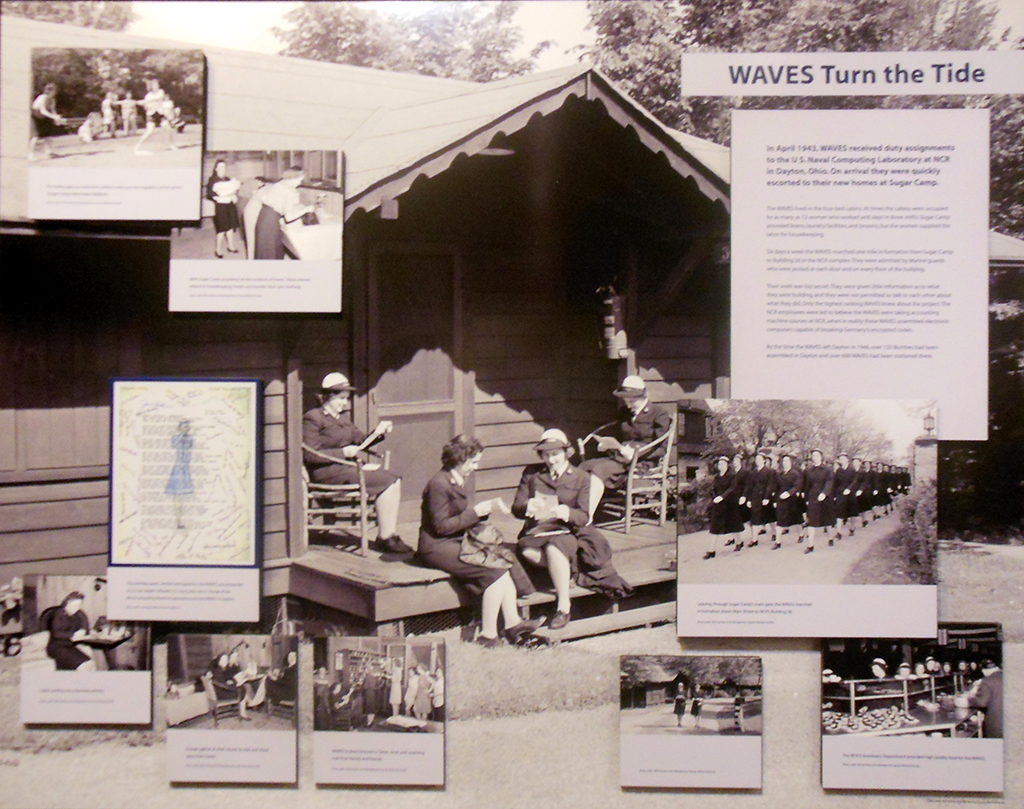 Dayton WAVES at Camp Sugar
Dayton WAVES at Camp Sugar
Other women, such as the Bainbridge Island Pioneer WAVEs, were trained as Japanese radio intercept operators. At the conclusion of their training at Bainbridge Island, Washington, the WAVES were assigned as watch standers with their male counterparts.
Over 2,000 “Code Girls” served with OP-20-G during the war.
Learn More
Code Girls: The Untold Story of the American Women Code Breakers of World War II, Liz Mundy, Hachette Books ISBN 9780316352543 (10/2/2018)
